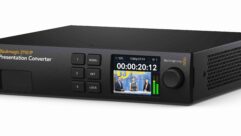The Price Is Right
Feb 1, 2002 12:00 PM,
Alan Kruglak
IT’S VERY DIFFICULT TO ACHIEVE CONSENSUS. TAKE my wife and me, for example. We both agree that she needs shoes, since walking around barefoot would just not sit well with the neighbors. However, that’s where our consensus ends. We always have different opinions when it comes to the quantity of shoes.
I firmly believe that she needs a dozen or fewer, pairs that is. She believes she needs a dozen squared, and even that is not enough. We’re talking a minimum of 288 individual shoes!
To use another example, the lack of consensus is also well known in our political system. Both Republicans and Democrats agree that we should fix the economy. However, one group wants to give tax breaks to individuals to soften the blow of the recession, while the other wants to offer tax breaks to corporations to entice them to expand and hire more employees.
In the world of business, on the other hand, there is one topic that receives 100% consensus: profits. Ask any business owner if they’d like to increase profits. The answer will always be a resounding, “Yes!” But, while we would all like to increase profits, many of us have trouble achieving that goal. Increasing profits is easier said then done, no matter how many consultants tell you otherwise.
Setting Price Targets
Over the last several years, I’ve outlined many ways to increase profitability based on my personal experiences in operating a systems integration company. However, a simple way to increase profitability is to raise your price targets, your sale price for systems. Whether you specialize in audiovisual systems, security, fire alarm systems, telecommunications or all of the above, raising your price targets can have a powerful impact on your bottom line.
At this moment, you’re thinking, “Is this guy crazy? If I raise my sale price for systems, I’ll lose business!” I felt the same way during the 1980s when a consultant told me the exact same thing. According to my consultant, the primary reason why businesses (including system integrators) have cash flow problems and other financial woes is that their price targets are too low. They don’t make enough money. If you’re showing less than a 10% operating profit, it’s difficult to maintain double-digit growth and meet your financial obligations. Besides, if your house is signed over to the bank as collateral, why shouldn’t you make more money? It took me a while to heed the $25,000 advice of the consultant, but I’m glad I did. So glad, that I’m passing on this valuable concept to you.
A key reason why business owners don’t raise their price targets is a combination of inertia and fear. If you ask an owner how his or her company established its current price targets, you’re likely to hear, “We’ve always sold at this price. Besides, if we raise our prices, our competitors will eat our lunch.”
Another reason is MSRP — the manufacturer’s suggested retail price. Most integrators use the MSRP as a guideline in establishing their price targets. This is fine if you are in the box business, where overhead requirements are low. However, if you are in the systems business, the MSRP just doesn’t provide enough gross margin to pay for the technical overhead required in implementing successful systems.
How Do I Raise My Price Target?
You can’t just raise your prices without a plan, or the results could be disastrous. Your first step is to identify the new price target. There are many ways to accomplish this. If you have a budget, you could identify your new operating profit goal and estimate the required increase in gross margin necessary to meet this objective. By working backwards, you can establish the new markup for your systems.
However, if you don’t have a budget or the time to create the necessary financial models, you can follow these steps:
First, raise your price target by an incremental amount. For instance, let’s say you are currently marking up your system costs by 1⅔ (a 40% gross margin). Increase your markup to 2 (a 50% gross margin).
Second, link your sales compensation plan directly to the estimated gross margin on a project. Using a sliding scale, whereby the higher the gross margin, the greater the commission.
The two simple steps above accomplish the following:
Increase Flexibility
Using a sliding-scale compensation plan gives your sales force the flexilibility to lower prices and meet the needs of the market, especially for highly competitive new accounts.
Increase Profitability
Higher prices will translate into greater profits in the one market segment where competition is almost non-existent: existing accounts. For many system integrators, this represents more than 40% of the business.
Create Goals
No matter what you believe, sales reps are not inclined to exceed the company’s established target price because many reps feel guilty about “price gouging.” By raising the price target, you alleviate them of that guilt because you are giving them a new set of written expectations and goals.
Some say that charging more for additions to existing accounts is unfair to the client. My response is that the market determines what is and what is not fair. If your clients think your products and services are overpriced for the value received, then they will make that determination by switching to a competitor. The market will let you know if you’re overpriced. But remember that you’re not selling a widget; you’re selling your expertise to design, install and maintain an integrated system with many interdependent components. This expertise is expensive to establish and maintain, and it is in short supply.
Not everyone will agree with my methods for increasing profitability, but there is consensus on the need to increase profitability, especially in smaller companies. While there are many ways to achieve this goal, one simple way is to truly understand the power of the price target, especially with your existing clients. If you have any questions on this topic, e-mail me. I should have some time available to answer any questions after building out more closet space for my wife’s shoes.
Management Perspectives are excerpted from the series of business books written by Alan Kruglak based on his experience operating a systems integrator and achieving gross margins of 54% and operating profits of 20%. For more information, contact Kruglak at 301/365-7522 or [email protected].










